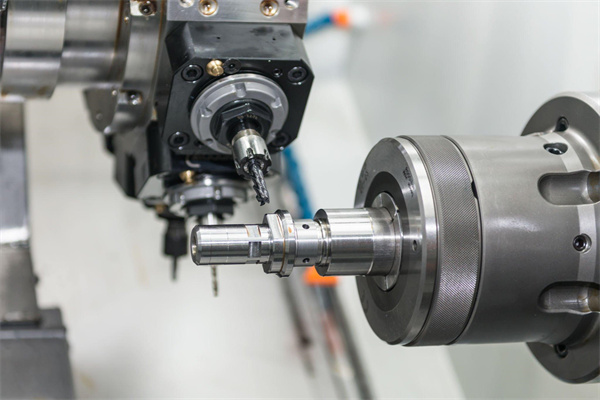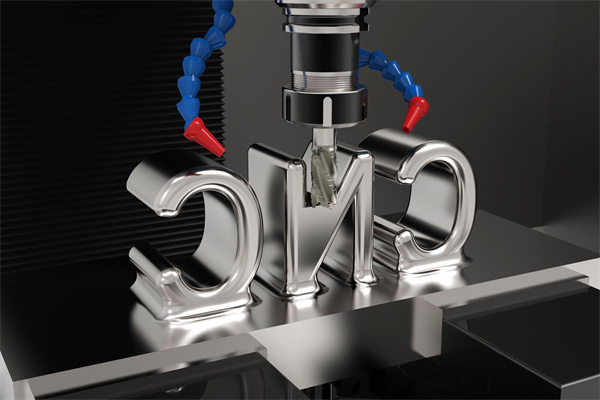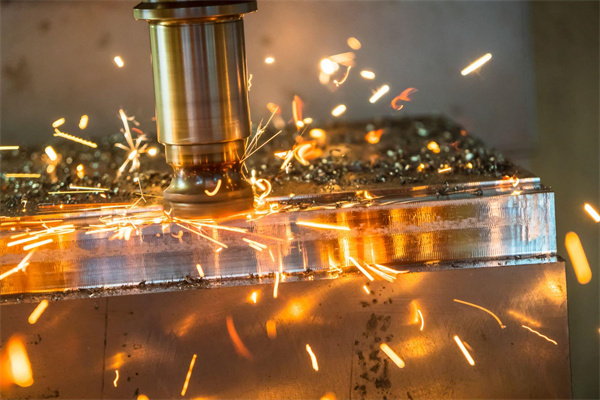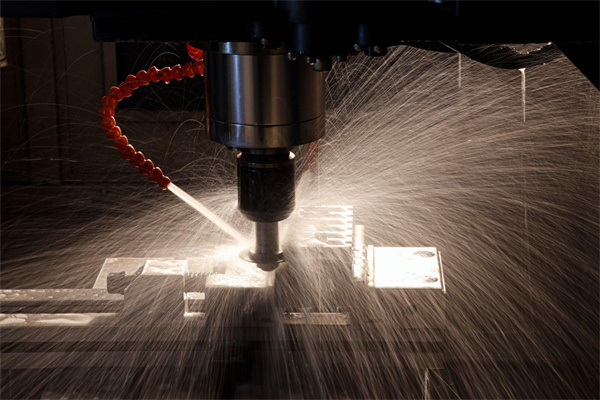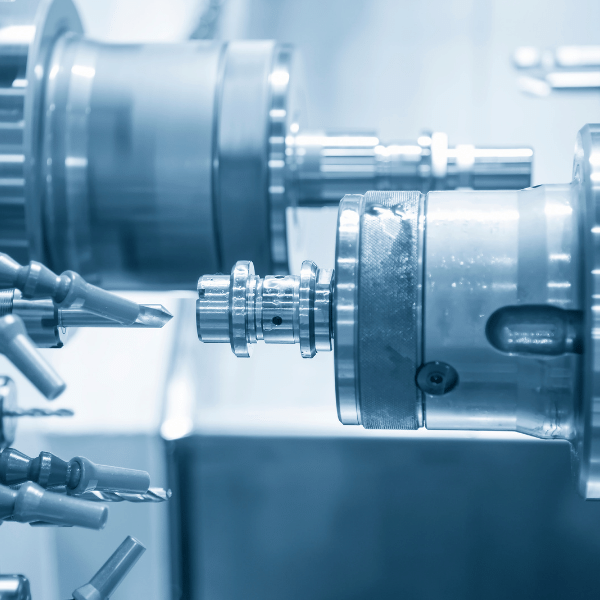[lwptoc]
The three types of CNC machining
CNC machining is a common fabrication process used to create parts from various materials. The process is controlled by computer numerical control (CNC) software, which directs the movement of parts and components through the CNC machine. Through precise commands, these machines can cut, drill, grind, and shape the material into desired shapes and objects with incredible accuracy and efficiency. In this blog post, we’ll explore the three types of CNC machining – milling, turning, and routing – and also look at which components move during each.
Milling is perhaps the most widely used type of CNC machining. It involves a rotating tool that moves in multiple directions as it cuts away at a material block. This is generally used for 3D printing – creating complex geometries from simple drawings or templates. When milling, the cutting tool moves along three axes: X-axis (left/right), Y-axis (up/down), and Z-axis (in/out). As it does so, the cutting tool removes material from the block to create its desired shape. During this process, the cutting tool and workpiece move along these three axes simultaneously to achieve the desired shape.
Turning is another form of CNC machining that involves rotating a cylindrical object, such as a shaft or spindle while using an external cutting tool to remove material. This machining is often used to make components like screws or pins with precise outer diameters or grooves. During turning, only one component moves – the workpiece itself – while all other elements remain stationary. This means less force is needed than when milling since only one component needs to be moved during each cut cycle.
Routing is similar to milling but involves fewer moving parts since instead of multiple axes moving together, it relies on two axes: X-axis (left/right) and Y-axis (up/down). This makes routing better for more intricate designs since there are fewer restrictions on the toolpaths it can follow due to the fixed nature of its ax’s movements. During routine operations, the router bit and workpiece move along their respective axes simultaneously until they reach their destination points; after that, they cease movement until another command sequence tells them otherwise.
Ultimately, which components move during CNC machining depends largely on which type you’re using; milling requires movement along all three axes, turning requires movement along just one axis, and routing requires movement along two axes, respectively. Each technique has advantages and disadvantages depending on your specific application, so consult an experienced engineer before deciding which method will be best for your project!
How the components move during each type of machining
When it comes to CNC machining, it is important to understand how the components move during the process. This article aims to explain in detail the movement of components when using this type of machining.
The basic components of a CNC machine are the cutting tool, the workpiece, and the machine table. During the machining process, these elements interact to create the desired shape or product. The movement of the cutting tool and workpiece is coordinated through a computer numerical control (CNC) program. This program will determine how much movement is needed for each component for machining to take place.
The cutting tool moves along a linear path as directed by the CNC program to machine certain workpiece areas. It is also possible for the cutting tool to move around an axis point on a circular path which helps create curved shapes or edges. In doing so, it removes material from the workpiece until it reaches its desired shape or size.
The workpiece can also be moved in several directions during the machining process. It is usually held down by clamps on top of a machine table and moved on trays or slides as programmed by the CNC controller. Depending on what kind of material needs to be removed, it can be moved along its x-axis, y-axis, and sometimes even its z-axis so that more precise cuts can be achieved.
Furthermore, more advanced CNC machines are available today with additional features and capabilities that enable them to perform even more complex tasks, such as drilling and tapping holes into parts or making curved surfaces on materials like wood or plastic. These machines are equipped with custom tools that allow them to do greater amounts of work faster than traditional methods without compromising accuracy or quality standards.
When understanding how components move during different CNC machining operations, a lot is going on. By understanding this information, manufacturers can ensure their products are made with precision and accuracy no matter what kind of job they need—and enjoy great results every time!
The benefits and drawbacks of each type of movement
Understanding the various types of movements enabled by CNC machining is important for understanding how to operate a CNC machine and its parts. This blog post will explore the benefits and drawbacks of each type of movement that occurs during CNC machining. We will also discuss which components move during CNC machining to understand the machine’s operation better.
The first type of movement found in CNC machines is linear motion, which involves the movement of a tool along a straight-line path. The advantages of linear motion include a high degree of accuracy, fast speed, and cost-effectiveness compared to other types of motion. Furthermore, linear motion allows for precise positioning control over the direction and length traveled by the cutting tool. On the other hand, linear motion has some drawbacks, such as limited flexibility in angles and curves that can be cut and limited reach due to its fixed range of travel.
The second type of movement in CNC machines is rotary motion, which refers to movement around an axis or pivot point. Rotary motion is used to drill holes or create curved surfaces on machined products. The main advantage of rotary motion is its ability to provide a high degree of accuracy when creating complex shapes that require precision control over their parameters, such as diameter and depth. On the other hand, it has some drawbacks, such as slower speed than linear motion due to its greater inertia caused by having more mass to move around an axis or pivot point compared to linear motion, which only moves along one line at a time.
The third type of movement found in CNC machines is helical interpolation, which involves the simultaneous use of Linear and Rotary Motion to create complex shapes and patterns on machined products. This type of movement yields unparalleled accuracy compared with either Linear or Rotary Motion alone since helical interpolation generates contoured shapes more efficiently than any other mode available today. However, this type requires specialized software programs and higher skill levels from engineers operating them to be used effectively on machined products.
Finally, oscillating or vibratory motions are sometimes used as part-cutting tools moving rapidly up and down or side-to-side to create desired patterns or shapes on machined products. Oscillating motions are typically used with softer materials such as plastics because they provide faster cutting times than other movements due to their rapid vibration patterns. However, these types produce more heat than other modes, so caution should be taken when using them with delicate materials.
In conclusion, several different types of movements occur during CNC machining – Linear Motion, Rotary Motion, Helical Interpolation, and Oscillating/Vibratory Motion – each offering unique advantages but having certain drawbacks upon their intended application. Understanding these different modes can help you determine which one best fits your needs when setting up your next project.
What factors do you need to consider when choosing a CNC machine for your business?
When choosing a CNC machine for your business, there are several important factors to consider. These considerations should be made before purchasing to ensure that the best machine is chosen for the job. This blog post will discuss which components move during CNC machining and what other factors you need to consider when selecting a CNC machine for your business.
When selecting a CNC machine, the type of movement in the machining process is the first thing to consider. The three basic types of movement in machining processes include linear, rotary, and spiral motion. Linear motion describes the natural movement of an item along a straight line path, such as cutting metal sheets or plates into pieces to make them into products. The rotary motion describes movement around an axis or center point, which can be used for drilling holes or turning metal objects on a lathe. Helical motion includes both linear and rotary motions combined, which can be used for milling out shapes or fabricating parts with any combination of curves and angles.
The next factor you need to consider is the complexity of the job and the type of CNC controller needed to control the operation’s sequence or pattern. For example, when machining complex 3D shapes with multiple curves or angles, you may need more than one type of controller, such as servo motors and stepper motors, for greater accuracy during operation. On top of that, some controllers may require additional software training to program them correctly.
Thirdly, you should also consider the size and weight capacity of your desired CNC machine since they usually come with different sizes and weight capacities depending on their intended applications. If you are planning on doing small-scale production runs where material costs are low, then opting for a smaller-sized machine would suffice; however, if you plan on manufacturing larger components, then it would be wise to invest in a bigger model so that it can handle heavier loads with ease as well as provide greater precision cuts due to its larger size capability.
Finally, cost should also play an important role when selecting a suitable CNC machine since they typically range from mid-range models up to expensive high-end options depending on their capabilities and features offered. When considering cost, it’s important not only to look at upfront costs but also to factor in any additional costs, such as spare parts and service fees down the road, which could add up over time if not properly accounted for by prior purchase agreement, thus inflating total cost significantly over peri, od utilized by machinery throughout its lifetime.
In conclusion, when choosing a CNC machine for your business, four main factors should be taken into account: type of movements needed during the machining process; complexity level required from the chosen controller; size & weight capacity requirements; and lastly, overall cost associated with purchase & ongoing maintenance throughout its lifespan. By taking each factor separately and weighing each against the company’s needs & capabilities, it’s possible to create a shortlist of potential candidate machines for the best-suited task at hand while avoiding unnecessary expenses & headaches further down the line due to poor decisions made beforehand .


